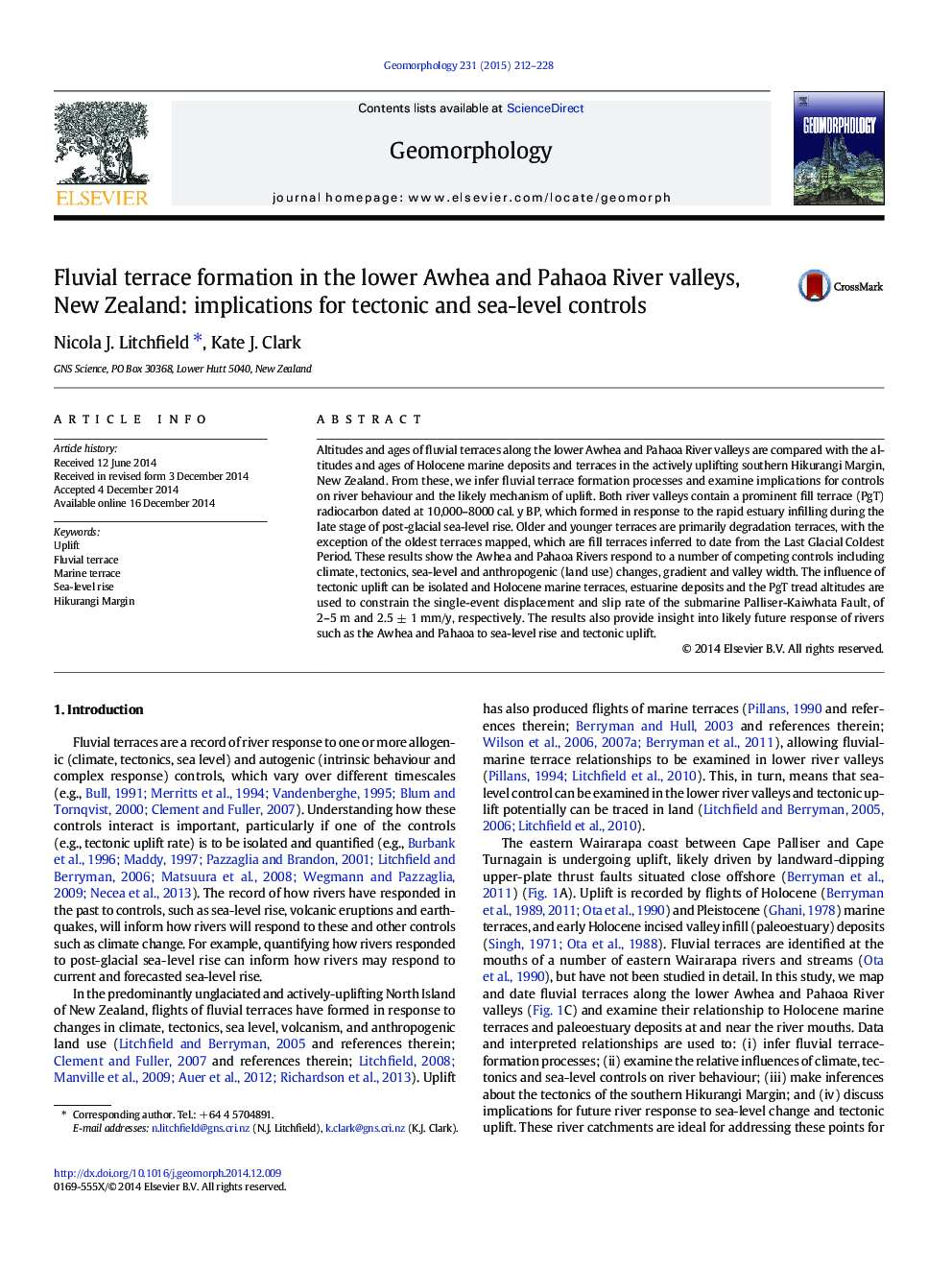| کد مقاله | کد نشریه | سال انتشار | مقاله انگلیسی | نسخه تمام متن |
|---|---|---|---|---|
| 4684332 | 1635418 | 2015 | 17 صفحه PDF | دانلود رایگان |

• Holocene fluvial and marine terraces are mapped, surveyed and dated.
• A prominent valley infill terrace formed during post-glacial sea-level rise.
• Controls are climate, tectonics, sea-level rise, anthropogenic and valley geometry.
• The uplift mechanism is an offshore fault with a slip rate of 2.5 ± 1 mm/y.
• Insights are gained into future impacts of sea-level rise and tectonic uplift.
Altitudes and ages of fluvial terraces along the lower Awhea and Pahaoa River valleys are compared with the altitudes and ages of Holocene marine deposits and terraces in the actively uplifting southern Hikurangi Margin, New Zealand. From these, we infer fluvial terrace formation processes and examine implications for controls on river behaviour and the likely mechanism of uplift. Both river valleys contain a prominent fill terrace (PgT) radiocarbon dated at 10,000–8000 cal. y BP, which formed in response to the rapid estuary infilling during the late stage of post-glacial sea-level rise. Older and younger terraces are primarily degradation terraces, with the exception of the oldest terraces mapped, which are fill terraces inferred to date from the Last Glacial Coldest Period. These results show the Awhea and Pahaoa Rivers respond to a number of competing controls including climate, tectonics, sea-level and anthropogenic (land use) changes, gradient and valley width. The influence of tectonic uplift can be isolated and Holocene marine terraces, estuarine deposits and the PgT tread altitudes are used to constrain the single-event displacement and slip rate of the submarine Palliser-Kaiwhata Fault, of 2–5 m and 2.5 ± 1 mm/y, respectively. The results also provide insight into likely future response of rivers such as the Awhea and Pahaoa to sea-level rise and tectonic uplift.
Journal: Geomorphology - Volume 231, 15 February 2015, Pages 212–228